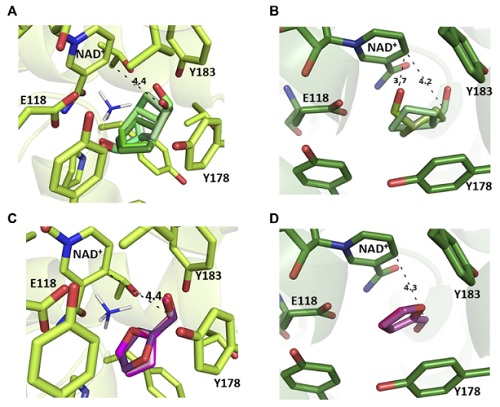Aurélie Fossey-Jouenne, Laurine Ducrot, P. J. Jongkind, Eddy Elisée, Anne Zaparucha, Gideon Grogan, Caroline E. Paul and Carine Vergne-Vaxelaire
Front. Catal., 2023, Volume 3
Abstract
Native amine dehydrogenases (nat-AmDHs) catalyze the (S)-stereoselective reductive amination of various ketones and aldehydes in the presence of high concentrations of ammonia. Based on the structure of CfusAmDH from Cystobacter fuscus complexed with Nicotinamide adenine dinucleotide phosphate (NADP+) and cyclohexylamine, we previously hypothesized a mechanism involving the attack at the electrophilic carbon of the carbonyl by ammonia followed by delivery of the hydride from the reduced nicotinamide cofactor on the re-face of the prochiral ketone. The direct reduction of carbonyl substrates into the corresponding alcohols requires a similar active site architecture and was previously reported as a minor side reaction of some native amine dehydrogenases and variants. Here we describe the ketoreductase (KRED) activity of a set of native amine dehydrogenases and variants, which proved to be significant in the absence of ammonia in the reaction medium but negligible in its presence. Conducting this study on a large set of substrates revealed the heterogeneity of this secondary ketoreductase activity, which was dependent upon the enzyme/substrate pairs considered. In silico docking experiments permitted the identification of some relationships between ketoreductase activity and the structural features of the enzymes. Kinetic studies of MsmeAmDH highlighted the superior performance of this native amine dehydrogenases as a ketoreductase but also its very low activity towards the reverse reaction of alcohol oxidation.


